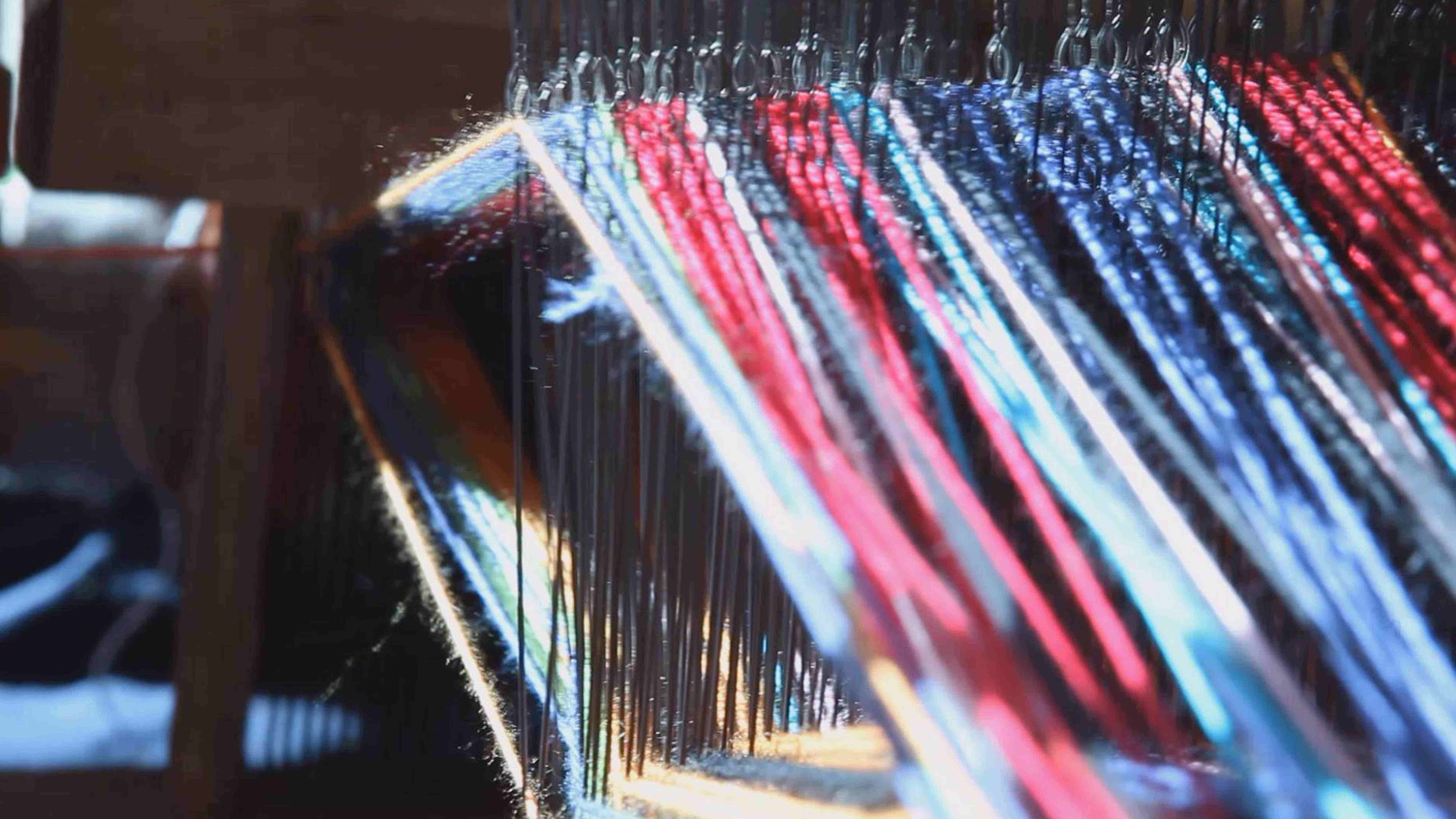
Culture
11:23, 26-Dec-2017
Revival of traditional craft brings opportunities to locals
By Yang Jinghao, Luo Caiwen

Huaji, a type of top-quality wool fabric, which can only be produced in Zedang, a small town in the city of Shannan, Tibet Autonomous Region, is experiencing a revival following the establishment of a cooperative.
The 1,000-year-old tradition of making Huaji has a total of 18 steps, including washing the wool, twisting it into yarn, weaving it and then pressing the fabric with stones before dyeing.
"Weaving Huaji is far more complicated, as the warp and weft are very thin and they need to be weaved together very densely and tightly," Kelsang Wangdi, a craftsman working in the cooperative, told CGTN.

An employee works at the cooperative, twisting the fine wool into yarn. /CGTN Photo
An employee works at the cooperative, twisting the fine wool into yarn. /CGTN Photo
Due to the relatively rare raw materials and complex weaving techniques, for quite a long time, only dignitaries could enjoy products made out of it.
Back in 2007, there were only a few elderly locals who were masters of the ancient craft. To preserve it from extinction, Pasang, a local Thangka painter, founded an ethnic hand-weaving cooperative and requested the elders to pass on the endangered skills to the younger generations.
"Ethnic crafts are priceless treasures. If they disappear because of our negligence, it would be an irreparable loss," said Pasang during a previous interview.

Products made out of Huaji are displayed. The cooperative's sales revenue can reach about 4 million yuan annually. /CGTN Photo
Products made out of Huaji are displayed. The cooperative's sales revenue can reach about 4 million yuan annually. /CGTN Photo
Over the years, the cooperative has taught and cultivated about 80 people – mostly farmers and herdsmen from impoverished families. They have benefited from the cooperative’s increasingly thriving business.
Pema Yudron, an employee at the cooperative, has worked here for two years. She said with the income from this job – about 3,000 yuan per month – her family has been lifted out of poverty.

A disabled woman makes school uniforms at the subsidiary of the cooperative. /CGTN Photo
A disabled woman makes school uniforms at the subsidiary of the cooperative. /CGTN Photo
Products made out of Huaji, like scarves, tippets and costumes are not just popular in Tibet. Sporting modern, innovative designs, these accessories also sell well in the inland cities. Sales revenue can reach about 4 million yuan (about 600,000 US dollars) annually. Now the cooperative is eyeing a bigger market with more plans in hand.
“We plan to move to a new factory in March. We’ll keep the traditional craftsmanship of hand-weaving, but at the same time, we’ll try to expand production by introducing some advanced equipment from the inland cities,” said Pasang Tsring, vice manager of the cooperative. Meanwhile, Thangka painting, the famed Tibetan art form, will also be kept here.

A Tibetan boy works on a Thangka painting at the cooperative. /CGTN Photo
A Tibetan boy works on a Thangka painting at the cooperative. /CGTN Photo
In 2016, the cooperative set up a subsidiary to produce school uniforms, relief tents and Tibetan-style souvenirs, employing local disabled people. In the coming years, it is expected to provide more employment opportunities to this marginalized group.
The vice manager said with the constant innovation and expansion of production, he believes their Huaji products will gain more popularity, and the craftsmanship, which was identified as an intangible cultural heritage in 2010, will be better preserved.
2543km

SITEMAP
Copyright © 2018 CGTN. Beijing ICP prepared NO.16065310-3
Copyright © 2018 CGTN. Beijing ICP prepared NO.16065310-3